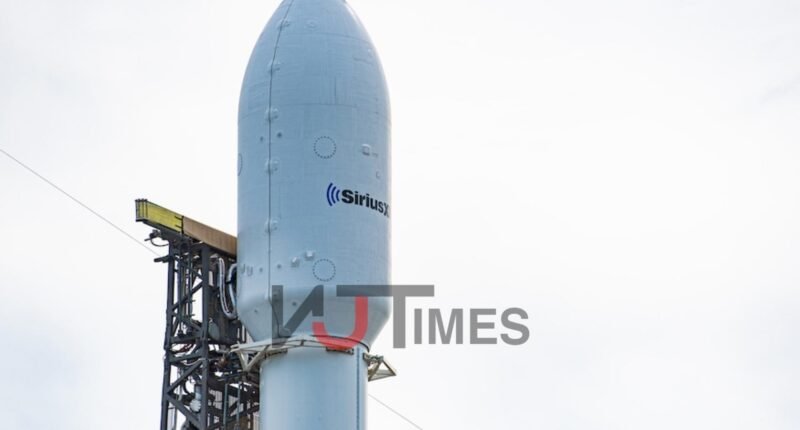Table of Contents
CAPE CANAVERAL – In a striking show of nighttime spectacle and technical precision, SpaceX successfully launched the SXM-10 satellite for SiriusXM in the early hours of Saturday, June 7. The mission not only bolstered the broadcaster’s satellite radio capabilities but also marked the Falcon 9 rocket’s eighth triumphant return to Earth — landing squarely on a drone ship floating in the Atlantic.
Midnight launch lights up Florida skies
At exactly 12:54 a.m. EDT (0454 GMT), the Falcon 9 lifted off from Cape Canaveral Space Force Station, punching through the humid Florida sky with the 14,100-pound SXM-10 spacecraft nestled in its nose cone. Just over eight minutes later, the rocket’s first stage completed a controlled descent, softly landing on the autonomous drone ship A Shortfall of Gravitas.
This particular booster has now clocked eight missions — among them, the high-profile Crew-9 astronaut deployment and the January 15 dual launch of lunar landers. In that earlier flight, Firefly Aerospace’s Blue Ghost made a successful lunar touchdown on March 2, while Japan’s ispace saw its Resilience lander crash during an attempted moon landing just this past Thursday.
New satellite to enhance SiriusXM’s reach
The SXM-10 satellite, built by Maxar Technologies, was deployed into geosynchronous transfer orbit approximately 33 minutes after liftoff. From there, it will maneuver into its operational position, joining SiriusXM’s expanding constellation to ensure uninterrupted, high-quality radio service across North America.
The new satellite’s arrival comes less than six months after the December 2024 launch of SXM-9, also carried aloft by a Falcon 9 — underlining SiriusXM’s renewed investment in orbital infrastructure and its reliance on SpaceX’s consistent delivery record.
SpaceX approaches 70 launches in 2025
Saturday’s success marks SpaceX’s 69th Falcon 9 launch of the year — a staggering number by any measure. Of these, 51 have been dedicated to the deployment of the Starlink broadband network, which aims to provide global internet coverage from low Earth orbit.
With each mission, SpaceX appears to be tightening its grip on the commercial space launch sector, blending frequency with reliability in a way few competitors can match. Reusability, once a risky experiment, is now the company’s defining strength — and the SXM-10 mission is yet another case study in how routine the extraordinary has become.
As the year progresses, industry watchers are keenly tracking whether SpaceX can maintain — or even exceed — this rapid cadence, with implications not only for global communications but for the broader economics of access to space.
Credit: Space.com
New Jersey Times Is Your Source: The Latest In Politics, Entertainment, Lifestyle, Breaking News, And Other News. Please Follow Us On Facebook, Instagram, And Twitter To Receive Instantaneous Updates. Also Do Checkout Our Telegram Channel @Njtdotcom For Latest Updates.










